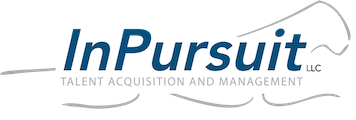The Future Workforce Series – Talent Acquisition – 5 of 6
In this series, we have discussed recent workforce changes, complications that accompany supply and demand issues, the newly designed employee mindset, and what it means to the employer. We’ve emphasized the need for appropriate technology, communication and recruiting strategies when planning to win at talent acquisition and retention.
We’ve noted emphatically that employers need to carefully assess what type of talent they need, how to attract that talent, and how to compete with other employers for acquisition and retention.
So… how are employers and employees creating solutions?
In this blog, let’s examine what we see when companies navigate the changing workplace successfully and how their leaders differ from those who are indecisive or resisting change. We’ll also gain a view of how the employer’s stance is being received by employees and applicants. And most importantly, we’ll look at what this means to the business and a healthy, competitive future.
We want to see employers come through this dramatic period of history unscathed, but even more that than, we want to see businesses adapt and thrive. With that type of outcome, they will have a stronger business model, more productive employees, a larger claim on the marketplace, and more substantial profits.
From some perspectives, this is a tall order. From our viewpoint, it is not only doable with realistic planning, but imperative for future success. We know that employers and employees can work together extremely well to find solutions that benefit the business, the employee, and the clients.
Resilience leads to a mutually beneficial outcome.
Most of us can remember a time when employers found employees easily, gave them a place to work, an extensive list of duties, and a timetable within established work hours to adequately complete the work. Those days are dead and gone, or as we like to say, “Recess is over.”
We must get down to business, and the past 18 months have changed the game for both employers and employees. We all had to find new ways of getting work done. Creativity was essential and, often, the only route to success. The status quo had lost its value.
Prospering employers are building a deeper understanding of accountabilities and deliverables. Forward-thinking leaders have recognized the positive outlook of business in a pandemic, rather than focusing on the negatives. They are taking an honest look at what needs to get done and what talents are required. They are also taking a fresh look at how to accomplish their goals under a different set of rules.
Employees are leveraging their newfound preferences.
Working from home, employees often went above and beyond, with unquestionable productivity. Failing was not an option. Over time, many employees learned to love the flexibility and convenience of creating their own workspace and schedules. For those contributors, it would be hard to go back. And they aren’t likely to do so.
We hear most employees say they are now seeking a virtual or, at least, hybrid environment. They are quick to add that they will leave organizations that are inflexible and require an exclusively in-office workforce.
Clearly, successful employers have heard this message and understood that changes are needed quickly. These leaders value their achievers and trailblazers and are willing to make adjustments that allow for productivity while honoring their employees’ favored work conditions.
Understand the risks; then make HR adjustments.
When competing for top talent, you must extend an attractive offer. The only way to do that is to make sure your HR policies are aligned with the new standards for top performers. Review your current employee manual with an eye to the key factors now preferred (and even demanded) in the workforce. Are your policies painting a picture from 2019 or do they reflect today’s employee-focused priorities?
Without a new set of standards, your outdated HR policies may significantly increase turnover and limit the opportunity to entice top talent. Especially if your competitors have already made changes to accommodate the new normal, your offer will pale in comparison to what’s being offered elsewhere. And your contributing employees will soon understand that they can find what they want at another, more supportive, company.
The InPursuit Search Solution
There are several important factors at play. Here are necessary steps to winning at the new normal. It starts with a new mindset for being the best employer and understanding the preferred work conditions for your current and future employees. Conduct a thorough review of your HR policies to build policies and procedures that will accommodate a hybrid workforce. Design more productive in-office workspaces, offering a selection of collaborative work areas and spaces with a quieter environment.
To achieve highly productive team performance, hiring managers must receive the necessary training to improve in-office and remote team efficiency. And to be effective, they need to define complete responsibilities and accountabilities. Employees do best when they understand what’s expected with a concise description of the outcome. For top performers, their creative brilliance and experience will show them how to get there.
Your HR department needs to build a value proposition to attract and retain an effective workforce, knowing that negotiation and flexibilities are warranted for both employer and employee. Along with the changes in policies, job descriptions must be tweaked to reflect the new work parameters.
With positive expectations and a realistic perspective on today’s job market, employers are creating a culture of mutual respect with the help of their employees. In honest conversations, they are learning what matters most to their employees and, together, they are exploring ways to make it happen. The outcome is a workforce that is more enthusiastic, appreciative, and highly productive.
In our next—and last—blog of this series, we’ll wrap up our discussion with our Recruiter Toolkit to maximize your effectiveness in hiring and retaining all-star employees. We’ll also give you the questions that recruiters must know the answers to before making an offer to a candidate. You won’t want to miss this critical piece of the puzzle.
Stay tuned—and if you’d like to discuss the new normal for successful recruiting, call David Zimmel at InPursuit Search: 651-756-8862. If you’ve found this series interesting, please share it with a friend who might also benefit. Thank you!


Recent Comments